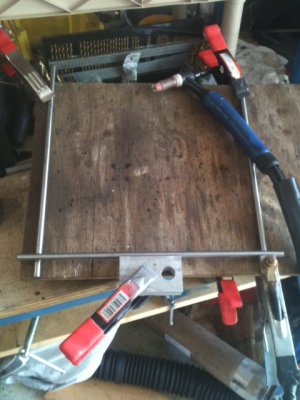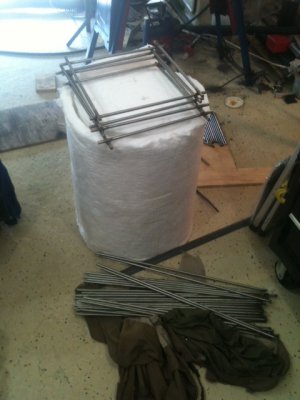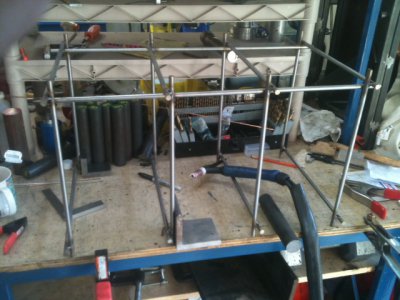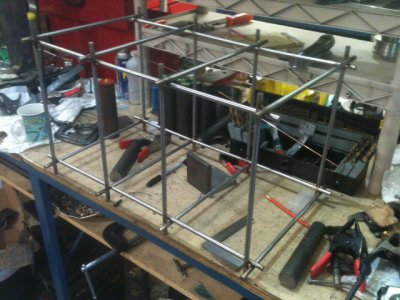Yes it is itchy stuff, I do not notice too much but some co workers run and hide when I have to work with it. I do not remove it from the box. I just pull it out like shrink wrap and lay it flat to cut it. It reduces the fibers flying around.
Interesting question on the use of two layers. On the box that I have nearly finished building for the tool maker, I had two layers, 2" thick, as a temporary plug at the one end of the ceramic tube. Once the tube was up to over 1700F, I was curious on the amount of heat escaping through the wool. I naturally took a look, I could see the glow through the wool and heat as well. I should of measured it, I do have the equipment to do so but did not. It was not super hot but a third layer might be called for. On the con caster the front has approx 3 inches of wool depth and you can not see nor feel the +2200F on the other side.
As for the cover for the outside of the box, I would use a non rusting grade of stainless steel. What I see happening on our equipment is mild steel will rust on the inside surface as it collects the water being pushed away from the heat, and it builds a nasty looking flaky rust sheet that falls down behind it and this stuff breaks down and works it way into and through the wool over time. I would not want the rust flakes to get into the electrical and cause issues. Have you a sheet of Inconel 600/601 laying around that you could use? Not likely pretty pricy stuff!
Pierre
- - - Updated - - -
Just to add a thought, I would for sure have 3 layers on the top surface. Heat at the top will naturally be higher than on the sides.
What are you doing for the floor?
Pierre




